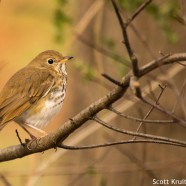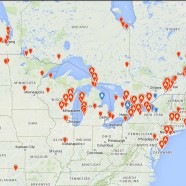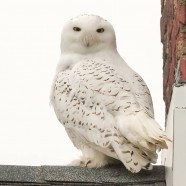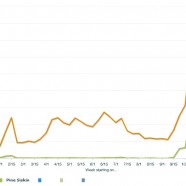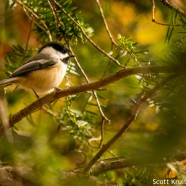Autumn Hermit Thrush (Catharus guttatus)
This beautiful Hermit Thrush (Catharus guttatus) posed wonderfully for me in the shade earlier today, taking a quick break from foraging in mounds of leaf litter. They are a shy species that can be found on the edges of forests and woodlands, even your yard, if there is enough space and habitat for them to find insects. As we near the winter their diet is going to shift to include various berries. I was surprised to find several of them this weekend, possibly having moved south and been more boldly active given all of the cold temperatures lately. They will enjoy this warm-up making bug...
Read MoreSnowy Owls spreading south
In the past week, since I posted this entry about another possible irruption, more Snowy Owls have moved in to southern Canada and the United States. One bird was found and photographed by Michele Rundquist-Franz, President of the Presque Isle Audubon Society, in Erie, Pennsylvania, not too far from us at the Roger Tory Peterson Institute of Natural History in Jamestown, New York. Local excitement went up another level this weekend as two Snowy Owls appeared here in our own Chautauqua County on Saturday, November 15, both at the Dunkirk Airport. The first was found in the morning by our...
Read MoreSnowy Owl in Erie, Pennsylvania by Michele Rundquist-Franz
Michele Rundquist-Franz, President of the Presque Isle Audubon Society, sent me this stupendous photo of a Snowy Owl taken last Wednesday, November 12. Michele took the photo of this bird on a roof of a home in Erie, Pennsylvania, noting this was approximately the same date Snowys started showing up in the coastal city last autumn. This weekend, with a cold northerly flow in place and a lot of birders outdoors, should yield more owl sightings. Get outside and find them – and good luck! Scott Kruitbosch Conservation & Outreach Coordinator
Read MorePurple Finch and Pine Siskin invasion
Two species have recently flooded the Northeast and Mid-Atlantic according to list serv reports, accounts from friends and my own personal observations – the Purple Finch and the Pine Siskin. The former has been unbelievably abundant in my experience, often being difficult to go outside for any length of time without seeing one in the past month. The latter, while a bit tougher to spot, has nonetheless zipped by in sizable groups and maintained their nomadic feeding habits. Just how massive are these irruptions in our region? I turned to eBird to find out the truth. Here are both...
Read MoreBlack-capped Chickadee (Poecile atricapillus) irruption
There have been Black-capped Chickadees (Poecile atricapillus) moving south in very subtle ways for a couple of months now. If you watch migratory hotspots you can sometimes detect their irruption years, especially if that location is not a particularly friendly habitat for the species. I have seen flocks of 10-20 birds tightly packed together and feeding on the move, possibly heading for a feeding station like yours. I always wonder what particular triggers end up notifying a widespread and highly adaptive bird like this one that they should nonetheless change their quarters for the autumn...
Read More



